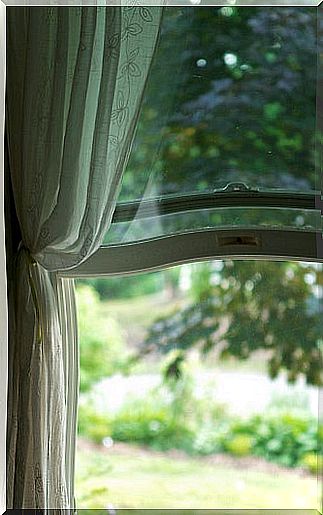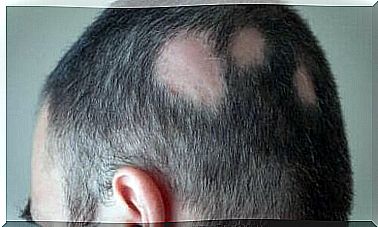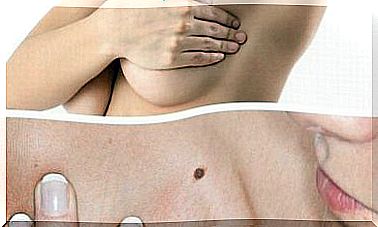Mite Spray
We are constantly exposed to a huge micro world of organisms, of which dust mites are a part.

Dust allergy is caused by small microorganisms known as dust mites.
It causes symptoms like nasal tamponade, frequent sneezing, runny nose, cough, itchy nose, eyes and in worst cases, asthma attacks.
Mites belong to various groups of arachnids. They are therefore related to spiders and scorpions.
We find them almost everywhere in a classic house. It is likely that we are surrounded by them right now.
We are constantly exposed to a huge micro world of organisms, including dust mites.
They are not necessarily harmful. The majority of mite species are harmless and are invisible to the naked eye.
The species that invades our homes the most and that is responsible for allergies and respiratory problems are house dust mites.
Below you will learn more about these microorganisms and how to control them.
Where are the mites found?
They are small organisms imperceptible to anyone (they measure about 0.3 millimeters). They feed on dead cells that break off from our skin.
The small fecal particles produced by these organisms are responsible for dust allergy.
Each of these microorganisms can produce about 20 of these particles daily. Living for 10 weeks, they therefore produce a total of 2000. A normal mattress can accumulate between 100,000 and 100 million dust mites.
The male mite lives for 10 days, while the female for 70. They manage to produce between 60 and 100 small eggs during their life.
The number of dust mites in a home can therefore increase exponentially.
They avoid the light. This is why they tend to hide in the fibers of fabrics and materials like the folds of the fabric of a cushion, a mattress, a rug and a plush.
They also proliferate in places at room temperature and humid. We will therefore find plenty of it in attics or cellars.
Dust allergy and its consequences on health
We estimate that dust mites are responsible for 50% of allergy symptoms.
Inhaling them generates respiratory diseases such as rhinitis. It is a disorder that affects the nasal lining and produces sneezing, itching, blockages, nasal secretions and sometimes a lack of smell.
They are also known to cause asthma.
Dust mites can cause allergic conjunctivitis. It is an inflammation of the eye causing itching, redness, tearing and the feeling of having something in the cornea.
Prolonged skin contact with mites also generates irritation: atopic dermatitis. It causes itching and inflammation of the skin.
Definitive Home Remedies
To avoid the annoyances of dust allergies, it is sufficient to avoid exposure to dust mites.
Housekeeping is the key point. There are several simple remedies to make it more effective,.
You therefore do not need any professional to control these microorganisms.
Anti-dust mite spray
One effective solution is to make a homemade insecticide to kill these organisms from the tissues and corners of the room. You can also buy them in store.
For this you will need:
- A spray bottle
- 1 half cup of alcohol
- Half a cup of deionized (distilled) water
- 30 drops of essential oils (lemon, eucalyptus, lavender, cypress, cinnamon etc.)
Mix all the ingredients in the bottle. The dust mite spray is ready!
Then spray the mixture on the bed, pillows, sheets, comforters, curtains and any place where dust collects.
It is recommended not to apply the spray in the presence of children under three years old and pregnant women.
Then allow the liquid to evaporate before using any objects that have been in contact with the mixture.
The mite population will be significantly reduced for two months, from the first use of the spray.
To keep the area free of these organisms, apply the mixture every two to three months.
Essential oils
Another remedy consists in diffusing daily in the air of the room of essential oils such as those of eucalyptus, lavender, mint, pepper or pine, to ensure a fresh air and without annoying particles.
The smell is also very pleasant.
A mixture of anise, cloves, fennel, thyme, verbena and lavender spray, sprinkled on sheets and rugs, also helps decrease the population of dust mites throughout the bedroom.
In addition, it leaves the room with a pleasant aroma and the atmosphere much cleaner and fresher.
On the other hand, essential oils can be irritating because they are very concentrated substances.
Thus, it is important to use them in moderation and to be careful not to apply them if you suffer from allergies to them.

Prevent the appearance of mites
It is essential to clean and prevent the appearance of new mites.
We will therefore have to make certain changes in the house to have conditions that do not facilitate the proliferation of mites. We will give you some tips.
- Keep low humidity, especially below 50%.
Frequent use of a dehumidifier in bedrooms reduces the chances of developing a dust allergy.
You can also buy a hygrometer to measure humidity levels in the house. - It is necessary to ventilate the room. So open the windows and let the wind in. Here’s a great way to keep dust particles and mites from building up. 15 minutes per day are also sufficient.
- You have to let light into the bedroom. Keeping the bedroom well lit can indeed help prevent dust mites from developing.
- Sheets and curtains must be washed at a temperature of at least 60 ° C. Thus, you make sure that the mites are eliminated.
- Cleaning the mattress is also important. This is indeed where we spend the most time in contact with mites and, probably, where the greatest concentration is found.
Be sure to regularly vacuum the mattress and between the grooves in the fabrics to remove all particles and dust.
Do this often to prevent them from building up on the surface of the mattress. - In summer, it is advisable to take everything out in the sun. These microorganisms cannot in fact survive very high temperatures.
Likewise, in winter, low temperatures kill them with formidable efficiency. - We can also remove dust mites from carpets, rugs and other shelters.
Carpet is indeed a comfortable habitat for them. Especially if it is on a cement floor since it retains moisture easily and creates a humid atmosphere for dust mites. If possible, replace the carpet with tiles, wood etc.
Changing furniture and other items in the room where dust collects, such as non-washable curtains, is also a great way to prevent them from appearing.
Removing them from the house is therefore a simple task, but it must be frequent to be effective.
It is therefore important to often clean the most critical places in the house, which are : the mattress, sheets and carpets, since it is in these places that there is the greatest concentration of these microorganisms.
It is advisable to make large spring and autumn cleaning. These are indeed the seasons when mites appear the most.









